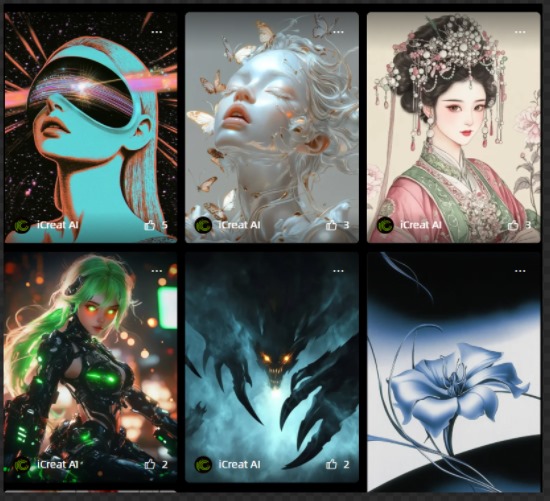
The evolution of storytelling has always been shaped by technology. From cave paintings to printed books, cinema to digital media, each technological leap has expanded the way we share and consume stories. In today’s digital age, the emergence of AI image generator marks a transformative moment in visual storytelling. These tools are redefining creativity, enabling artists, marketers, writers, and filmmakers to bring their visions to life with unprecedented speed and imagination.
The Rise of AI in Creative Processes
Artificial Intelligence has steadily made its way into creative industries, offering solutions that range from writing assistance to music composition. Among the most disruptive innovations is the AI image generator — a tool that uses advanced machine learning algorithms to create images from textual prompts. Trained on vast datasets of images and artworks, these generators can craft visuals that reflect various styles, emotions, and narratives in seconds.
This capability not only accelerates the creative process but also democratizes access to high-quality visuals. No longer confined to traditional skills in drawing or design software, creators of all kinds can now participate in visual storytelling.
From Imagination to Image: The Power of Prompting
One of the most compelling aspects of AI image generators is their responsiveness to natural language prompts. A storyteller can simply describe a scene — “a lonely astronaut on a frozen alien planet under a purple sky” — and the generator will produce a visual interpretation of that concept. This ability to translate words into visuals bridges the gap between abstract ideas and tangible content.
For writers and filmmakers, this offers a powerful pre-visualization tool. Scenes that previously existed only in imagination can now be visualized instantly, aiding in world-building and narrative development. The AI image generator becomes a collaborative partner, expanding the boundaries of individual creativity.
Enhancing Storytelling Across Mediums
AI-generated images are finding their way into books, comics, games, films, marketing campaigns, and educational content. In graphic novels and comics, for example, creators can use these tools to design characters, environments, and key scenes without relying entirely on hand-drawn art. This significantly reduces production time and allows for more experimentation during the creative process.
In the gaming industry, concept artists can quickly generate variations of characters or landscapes to test different aesthetics. Meanwhile, educators are using AI-generated visuals to create engaging and customized learning materials, bringing historical events or scientific concepts to life with vivid detail.
Empowering Independent Creators
One of the most revolutionary impacts of the AI image generator is the empowerment of independent creators. Budget constraints have historically limited access to high-quality visuals, but AI tools now level the playing field. Indie authors can create book covers, storyboard illustrations, or promotional content without hiring a full creative team.
This shift is fostering a new era of self-publishing and grassroots storytelling, where creators are less dependent on traditional production pipelines. As AI continues to improve in accuracy and style adaptation, the quality of content produced by solo creators is beginning to rival that of established studios.
A Catalyst for Innovation in Marketing and Branding
In the competitive world of marketing, speed and originality are crucial. Brands are increasingly turning to AI image generators to develop ad visuals, social media content, and campaign mockups. With the ability to quickly prototype different visual directions, marketers can test concepts and refine their storytelling strategies more efficiently.
The AI image generator also allows brands to maintain a consistent visual language across platforms while adapting content to target specific demographics. This enhances engagement and allows for more personalized storytelling that resonates with consumers on a deeper level.
Navigating Ethical and Artistic Challenges
Despite the immense potential of AI image generators, they also raise important ethical and artistic concerns. Questions about originality, copyright, and authorship are central to the ongoing debate. Since these tools are trained on vast datasets of existing artworks and images, there is ongoing scrutiny about whether they unintentionally replicate styles or compositions without credit.
Artists worry about the devaluation of human-made art, and some argue that the proliferation of AI-generated content could lead to visual saturation and creative homogenization. These concerns highlight the need for transparent policies, ethical guidelines, and perhaps new forms of digital attribution.
Moreover, the human touch — the subtle nuances, cultural references, and emotional depth that artists bring — remains a key component of storytelling. AI can assist and inspire, but it cannot fully replace the human capacity for empathy and intuition.
The Future of Visual Storytelling with AI
As AI technologies continue to evolve, the capabilities of image generators are becoming increasingly sophisticated. Future iterations may integrate real-time interaction, emotional tone detection, or even multi-modal storytelling that combines audio, video, and interactive elements with visuals.
Imagine immersive virtual reality experiences crafted on the fly by AI based on a user’s input, or real-time image generation during live performances or podcasts. These innovations could reshape how stories are told, consumed, and remembered.
Educational institutions, creative agencies, and tech companies are beginning to invest in training the next generation of storytellers to work with AI tools. Rather than viewing AI as a replacement, the focus is shifting toward co-creation — using AI to enhance, not overshadow, human creativity.
Conclusion: A New Chapter in Creative Expression
The emergence of the AI image generator marks a pivotal moment in the evolution of storytelling. From facilitating rapid concept visualization to democratizing content creation, these tools are reshaping how ideas are transformed into visuals. While challenges remain, especially regarding ethics and originality, the opportunities for innovation are vast.